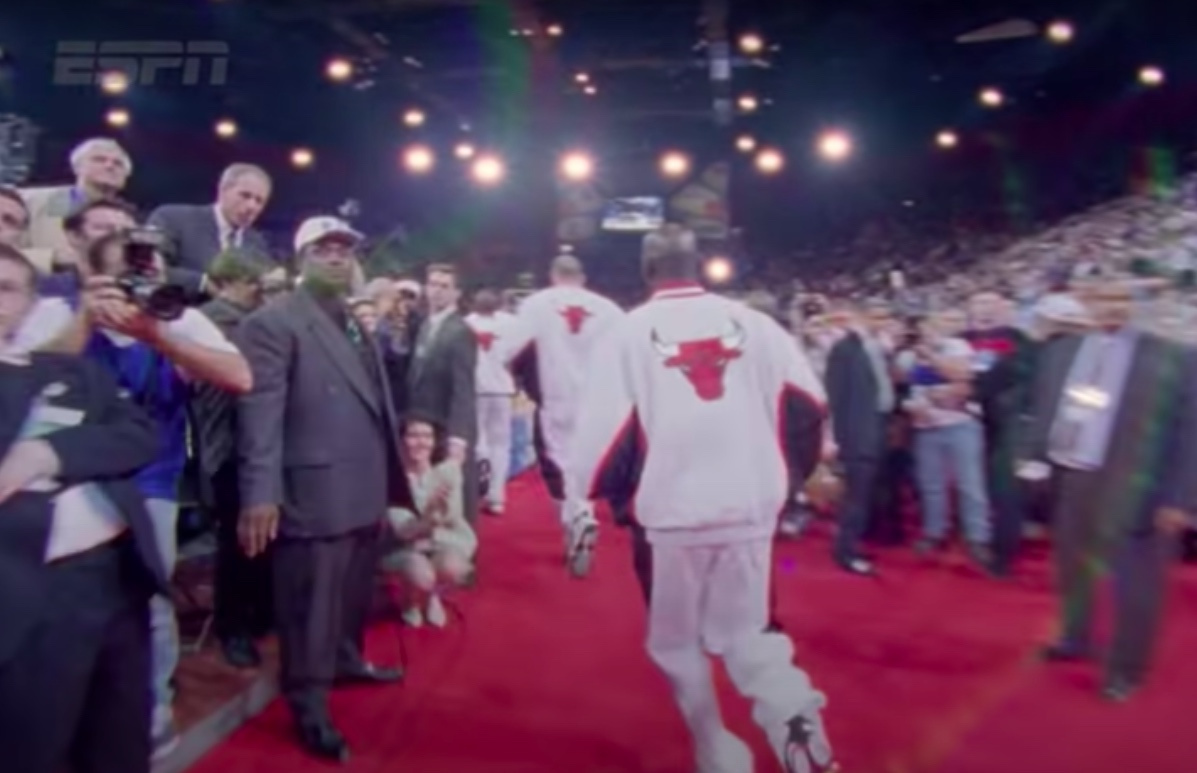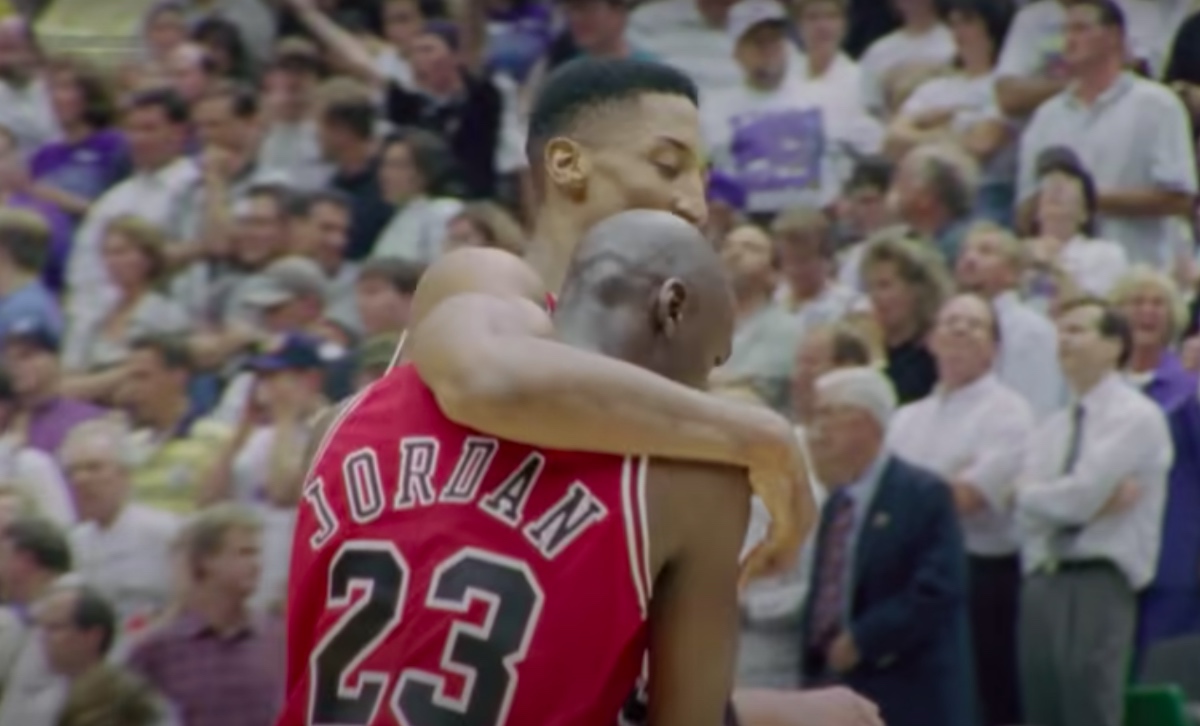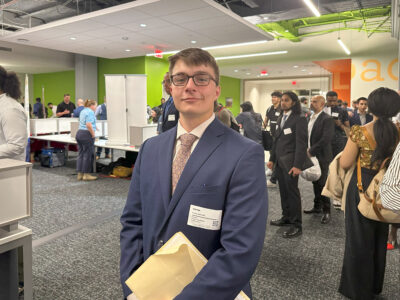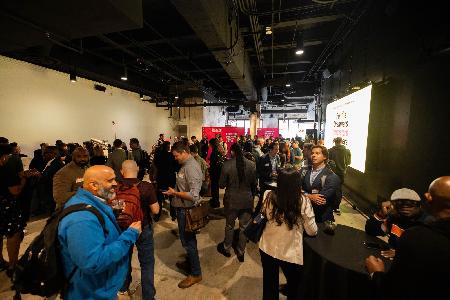I’ve always thought there were similarities when comparing high-impact engineering teams to successful sports teams.
Both have a leader, the coach or engineering manager, who orchestrates practices, games, meetings, etc. Sports teams typically consist of individuals who have a diverse set of skills or traits — you need players that will take risks and shoot their shots while also having players who are more risk-averse, more likely suited for defensive positions. The same can be said for engineering teams, ideally, consisting of engineers who are up for experimenting with ideas to enable innovation and those who prefer to be a bit more cautious in favor of platform stability.
This comparison of engineering teams to sports teams was more evident as I watched the “The Last Dance” docuseries. For those who did not tune in on Netflix or ESPN, it’s a 10-part series that chronicles Michael Jordan’s career, with an emphasis on the 1997-1998 NBA season — the last season in which Jordan played for the Chicago Bulls basketball team.
Viewers get a glimpse into the behind-the-scenes stories that revolved around this successful and infamous basketball team. It also serves as a great example of what makes a successful team — one that consists of diverse personalities and working styles. Michael Jordan could not have won six championships with the Chicago Bulls all by himself. What begins as a highlight reel of Jordan’s life actually evolves into a narrative not just about Jordan himself, but also the cast of characters that made the Chicago Bulls basketball team a six-time champion. The cast of characters includes Dennis Rodman, Scottie Pippen, Steve Kerr, Toni Kukoč and of course, the coach, Phil Jackson.
You don’t have to understand the game of basketball itself to truly grasp the significance each of these players made. Their character traits can be seen outside of the court — for example, on engineering teams.
Now, let me compare one of the most famous (and possibly greatest) basketball dynasties to engineering teams, and how these similar personalities or archetypes ultimately allow for the team to be successful.
Phil Jackson: The leader who enables others to lead
Let’s first start with the coach. From the early ’90s, Phil Jackson managed a truly diverse cast of characters. He was particular, as most successful individuals are, yet often referred to as the “zen master.” He ditched the ego in favor of distributing power amongst the individuals on the team.
“The more I tried to exert power directly, the less powerful I became,” he wrote in his book “Eleven Rings: The Soul of Success.” “I learned to dial back my ego and distribute power as widely as possible without surrendering final authority. Paradoxically, this approach strengthened my effectiveness because it freed me to focus on my job as keeper of the team’s vision.”
The best leaders, whether they’re a coach or an engineering manager, find ways to empower people. They look for opportunities to build things that other teams aren’t doing so the team can innovate and solve problems, keeping engineering fun. Let the engineers figure out the “how” while you, as a leader, figure out the vision or why we need to do something.
Jackson also had an appreciation for the players themself, creating an environment for the players to have compassion for each other and allowing for a sense of unity. As engineering managers, the main objective is to create a team that can be successful, delivering on quarterly product goals and evolving the engineering systems as needed. To do this, we of course need engineers. It’s important for managers to realize this obvious but sometimes overlooked sentiment; appreciate your engineers. Acknowledge that without them, there really would be no way to accomplish your company’s goals and product needs.
Dennis Rodman was great at what he did (rebounds), and Jackson knew how to harness his talents and adapt to his personality to get the best out of him, which is the goal of a good leader. People have different styles of working, and working style is a dimension of personality. Having a range of personalities and working styles could be referred to as diversity. Having a diverse team has shown to lead to more innovation. Everyone has different strengths, it’s our job to figure out how to harness those strengths to make a well-rounded team.
Jackson gave his team the freedom to be themselves and did not force his “power” on them. He let them all be leaders in their own way. This, to me, is exactly what is needed from a manager leading an engineering team. Despite the collective differences within a team, there can be real camaraderie if the engineering manager or coach enables such an environment for the team.
Dennis Rodman: The rebel without a cause
Since we already alluded to him in prior, let’s move onto the most eccentric ingredient of the Chicago Bulls success in the mid-’90s: Dennis Rodman. When Rodman performed on the basketball court, he was the rebound king that was known for his physicality, occasionally beating up his opponents with a sense of fearlessness. You know, like that engineer that doesn’t flinch at the mere thought of deploying a change to production on a Friday afternoon or rolling out code that had little-to-no QA, confident in the software they write. Or that engineer that boldly states what everyone else is thinking while others tip-toe around the subject in a team meeting. Somewhat of a rebel — respectful rebel, that is. The one that we all admire for their “do what I want” state of being.
Everyone has a Rodman. And if you don’t know if you have a Rodman, take a second and think about that engineer that marches to the beat of their own drum. As depicted in the documentary, Rodman once left Chicago for an excursion in Vegas; although I can not exactly compare this scenario to that of engineers on a team, I have been in situations where I have an engineer take vacation with little notice. It happens. I prefer my teams to not run as a dictatorship, so in the worst-case scenario we’re short-staffed for a short period of time and simply accomplish less until the engineer is back. That’s not the end of the world. Best-case scenario, the team is in a healthy state where the absence of one member for a few days isn’t too big of an issue. Either way, it’s a good opportunity to learn if they’re a single point of failure or that your team is equipped to run while they’re away.
Rodman’s fellow teammates recognized that his offbeat nature made him the fearless rebound king that he is best known for being. This point shouldn’t be taken lightly. Within the engineering team, the Rodman-like engineer may often feel different compared to everyone else on the team, it’s critical for the team to embrace their differences, acknowledging that their way of thinking or working can often lead the team toward solutions they wouldn’t have originally thought of.
Michael Jordan: The recognized leader
My first impression of Michael Jordan came from the Mia Hamm vs. Michael Jordan Gatorade ad. He’s an icon, tried and true. Undoubtedly the leader of the Chicago Bulls. He pushed his teammates while being very critical of them. Similar to the engineer who takes time to properly review pull requests, because they know their teammates can do better. This type of engineer sets the bar high, and pushes us all to meet their high expectations. They make us better. They are the individuals that the early-career engineers strive to be like.
Although Jordan was the leader, he was not the only guy on the court. The coach, Phil Jackson, acknowledged that they couldn’t simply have Jordan scoring all the baskets; this would be far too easy to defend from the opponents point of view. Knowing this, it was their job to uplevel his teammates.
“’I’m not worried about you,’” Jordan recalled Jackson saying. “’But we have to find other ways to make the other guys better. We have to create threats.'”
In the similar vein with engineering teams, the Jordan-like engineer also has a desire to uplevel their teammates. Otherwise, the work would be on their shoulders alone … and that’s no fun. No one wants to be a one-person team. Work is more enjoyable when you can solve problems with your peers, pair-program, rely on each other to distribute the work so we can accomplish more, etc.

Team. (Screenshot)
Scottie Pippen: The underrated backbone of the team
Jordan himself said Pippen “may have been known as a defensive specialist, but he had a great all-around game and was a quiet and unselfish force on our Chicago Bulls teams, as well as on the Dream Team.”
Scottie Pippen was most famously known as Jordan’s sidekick. He had grit and was far underrated. Pippen’s trademark was defense, which allowed Jordan to play more offensively. How good was Pippen as a defender, you ask? He made the All-Defensive First Team eight consecutive times. If Pippen had such a desire to leave the Bulls, he could have easily been the star of another team.
After three consecutive championships on the Chicago Bull, Jordan retired, opting for a career in baseball before returning to the Bulls the following season. While Jordan was away, the Chicago Bulls were still quite good. To borrow terminology from baseball, Pippen stepped up to the plate to lead the team all the way to the playoffs, ultimately losing to the New York Knicks in the second round.
“He did everything for us,” former Bulls assistant coach Pete Myers said in reference to that Jordan-less season in which Pippen led the Bulls. “He rebounded the ball; defensively, he guarded the perimeter; he just did everything imaginable, which made everyone else’s job easier.”
Most engineering teams have that one engineer that stays somewhat under the radar but if you pay close attention, they’re making all magic happen behind the scenes, similar to Scottie Pippen. They likely are used as a sound board or “rubber ducky” when other engineers on the team are planning architectural migrations or are undecided on which route to go implementation wise of a new feature. They’re versatile, can join a project at the last minute to help the team out and help see it through to the finish line. They step in and make things happen, without being the star of the show. Emphasis on the later part of that statement. This type of engineer may be underrated to the untrained eye. To the trained eye, they’re leading the team.
Pippen was also, unfortunately, very much underpaid. The contract he signed at the onset of 1990s with the Chicago Bulls was significantly lower than market value. Naturally, Pippen was frustrated with the state of his compensation, and dramatics ensued. He knew he was great. And he knew the Bulls wouldn’t be the same without him. His frustrations played out quite publicly and was, as well, a narrative in the “Last Dance” documentary.
This storyline may be far too familiar for some. If you’re an engineer that has been on the same team for a couple of years, you may be making less than market value as it is sometimes difficult to continue to get yearly increases to keep up with said market. If you’re a person of “power” and are well versed at working in big tech companies, you’ve likely been in a situation where you have an wonderfully talented engineer on your team that is similar to Pippen — they’re a 10x engineer, keeping the team going, but regrettably, underpaid. Of course, it’s the job of engineering leaders to fix such issues. Alas, that is a topic for another article.
Steve Kerr: The player turned coach
Now, we all have the engineer archetype on the team who will more than likely move on to becoming an engineering manager. Or alternatively, they might pivot to another leadership position like product management. Kerr did just this. He was a guard for the Chicago Bulls but eventually shifted to become head coach of the well acclaimed Golden State Warriors.
His time on the Chicago Bulls may have influenced his coaching methodology, especially while being around the great Phil Jackson. He took a page out of Jackson’s book by putting the team first, not just the super star but rather all the players.
“Strength in numbers,” Kerr said. “I wanted that same philosophy of everybody being valued, everybody touching the ball. Everybody being empowered. That was so powerful to me as a player. And all that came from Phil.”
This statement is exactly what makes a great team. Everyone is enabled to lead as they wish. It’s not about the individual, but rather all of the individuals that make up the team.
As an engineer turned engineering manager myself, my management philosophy is an artifact from my past experiences. Similar to Kerr, I had the luxury of working with admirable and experienced engineering leaders when I was just a young, doe-eyed engineer. They taught me the ways of servant leadership, in which the goal of the leader is to serve the team, put the team first.
Diverse teams win championships … or build great products.
What made the “Last Dance” documentary so interesting is how this successful Chicago Bulls basketball team consisted of many great yet somewhat quirky individuals that all came together to win not just one, two or three but six championships. In engineering, our backgrounds and diverse skill sets can open up multitudes of possibilities with regard to the products we build. It’s a privilege to be able to log in to our computers every day and build the features and products that drive business needs or product goals. Let’s embrace our differences, build a sense of togetherness and remember: We’re working together as a team to build cool things.
Before you go...
Please consider supporting Technical.ly to keep our independent journalism strong. Unlike most business-focused media outlets, we don’t have a paywall. Instead, we count on your personal and organizational support.
3 ways to support our work:- Contribute to the Journalism Fund. Charitable giving ensures our information remains free and accessible for residents to discover workforce programs and entrepreneurship pathways. This includes philanthropic grants and individual tax-deductible donations from readers like you.
- Use our Preferred Partners. Our directory of vetted providers offers high-quality recommendations for services our readers need, and each referral supports our journalism.
- Use our services. If you need entrepreneurs and tech leaders to buy your services, are seeking technologists to hire or want more professionals to know about your ecosystem, Technical.ly has the biggest and most engaged audience in the mid-Atlantic. We help companies tell their stories and answer big questions to meet and serve our community.
Join our growing Slack community
Join 5,000 tech professionals and entrepreneurs in our community Slack today!






